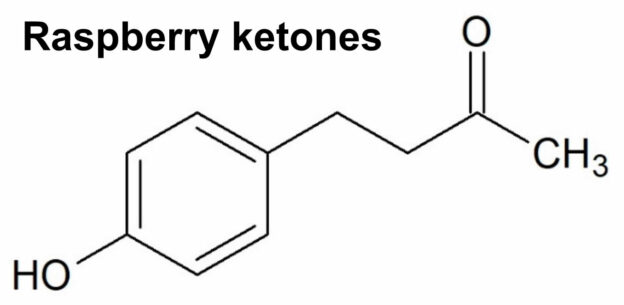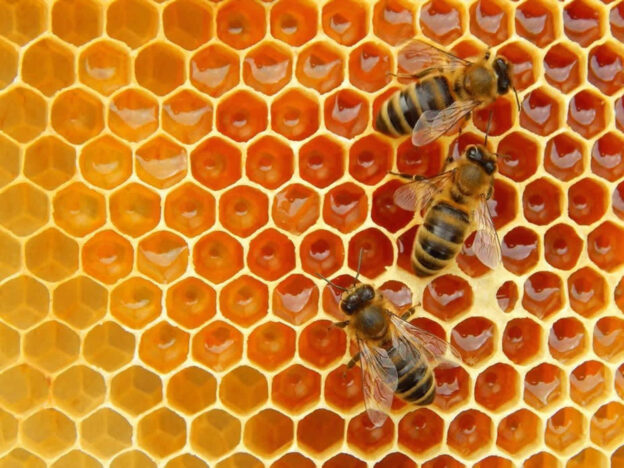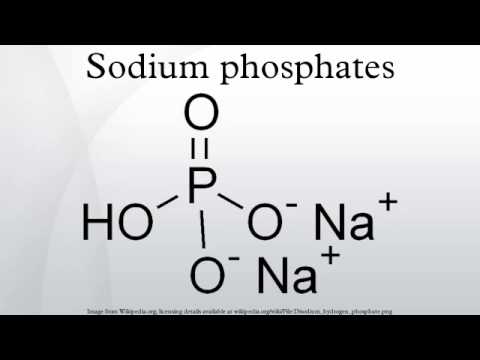Reishi mushroom is one of the most popular medicinal mushrooms in the world. It has been used for centuries in traditional Chinese medicine to promote longevity and improve overall health. However, as with any popular health supplement, there are many misconceptions and myths surrounding the uses and benefits of reishi mushroom. In this post, we will separate fact from fiction and explore the true benefits of this fascinating mushroom. We will take a closer look at the science behind reishi mushroom, as well as its potential applications in modern medicine. Whether you’re a seasoned herbalist or just curious about the benefits of reishi mushroom, this post will provide you with the information you need to make informed decisions about your health.
1. Introduction: The rise in popularity of Reishi Mushroom
In recent years, there has been a surge in the popularity of Reishi mushroom, also known as Ganoderma lucidum. This unique mushroom, native to Asia, has been revered for centuries in traditional Chinese medicine for its potential health benefits. However, as its popularity grows, so does the confusion surrounding its true properties and uses.
Reishi mushroom is often referred to as the “mushroom of immortality” or the “elixir of life” due to its long-standing reputation as a powerful adaptogen. It is believed to support the body’s natural defense mechanisms, promote overall well-being, and increase vitality. With such remarkable claims, it’s no wonder that Reishi mushroom has caught the attention of health enthusiasts and researchers alike.
The surge in popularity can also be attributed to the growing interest in natural remedies and alternative medicine. As people seek more holistic approaches to health and wellness, they turn to ancient practices and traditional remedies, like Reishi mushroom, for potential solutions.
However, amidst the hype and buzz, it is essential to separate fact from fiction when it comes to Reishi mushroom. While there is a wealth of anecdotal evidence supporting its various health benefits, scientific research is still ongoing to fully understand its potential and mechanisms of action.
In this blog series, we aim to demystify Reishi mushroom by examining the existing research, exploring its traditional uses, and addressing common misconceptions. By delving into the science and history behind this intriguing mushroom, we hope to provide you with a comprehensive understanding of Reishi mushroom and its potential impact on your health and well-being.
So, join us on this journey as we navigate through the fascinating world of Reishi mushroom, separating fact from fiction and uncovering the truth behind its rise in popularity.
2. The history and cultural significance of Reishi Mushroom
The Reishi mushroom, also known as Lingzhi or Ganoderma lucidum, has a rich and fascinating history that spans centuries. This mushroom holds significant cultural and medicinal value in various parts of the world, particularly in Asian countries like China, Japan, and Korea.
In traditional Chinese medicine, Reishi has been highly revered for over 2,000 years. It is often referred to as the “Mushroom of Immortality” or the “Divine Fungus.” Ancient texts and historical records depict Reishi as a symbol of longevity, vitality, and spiritual enlightenment. It was believed to balance the body’s energy, promote overall well-being, and boost the immune system.
Reishi mushroom’s cultural significance extends beyond its medicinal properties. In ancient China, it was considered a symbol of good luck, prosperity, and divine power. Emperors and nobles coveted this mushroom, and its rarity made it a prestigious gift exchanged among the elite.
Moreover, Reishi mushroom holds a place in many cultural and religious rituals. It is often depicted in paintings, sculptures, and pottery, showcasing its importance in art and aesthetics.
Today, the popularity of Reishi mushroom has transcended cultural boundaries, and its remarkable health benefits are recognized worldwide. Scientific research has shed light on its potential therapeutic properties, including its immune-boosting, anti-inflammatory, and antioxidant effects.
With its rich cultural heritage and historical significance, the Reishi mushroom continues to captivate the interest of researchers, health enthusiasts, and curious individuals seeking to uncover the truth behind its mythical reputation. By separating fact from fiction, we can better understand the true potential of this remarkable fungus and harness its benefits for our well-being.
3. Understanding the different types and species of Reishi Mushroom
When it comes to Reishi mushroom, there are several different types and species to be aware of. Understanding these variations can help you make informed decisions when using Reishi mushroom products or supplements.
The most common and well-known species of Reishi mushroom is Ganoderma lucidum. It is easily recognized by its shiny, reddish-brown cap and woody texture. This species has been used for centuries in traditional Chinese medicine for its potential health benefits.
Another species, Ganoderma tsugae, is often referred to as the “hemlock reishi.” It is typically found growing on hemlock trees in North America. While it shares some similarities with Ganoderma lucidum in terms of its medicinal properties, it has its own unique characteristics and potential benefits.
Ganoderma lingzhi is another species of Reishi mushroom that is highly regarded in traditional Chinese medicine. It is often referred to as the “spiritual potency mushroom” and is believed to have a positive impact on overall well-being and longevity.
Other less common species include Ganoderma applanatum, Ganoderma oregonense, and Ganoderma curtisii. While these species may have some similarities in terms of their appearance and potential health benefits, they also have their own distinct characteristics.
It’s important to note that different species of Reishi mushroom may contain varying levels of bioactive compounds, such as triterpenes and polysaccharides, which are believed to contribute to their potential health benefits. Therefore, understanding the specific species of Reishi mushroom you are using is crucial for maximizing its potential therapeutic effects.
In conclusion, familiarizing yourself with the different types and species of Reishi mushroom can help you navigate the world of Reishi mushroom products and supplements with confidence. By understanding their unique characteristics and potential benefits, you can make informed choices to incorporate this remarkable fungus into your wellness routine.
4. Separating fact from fiction: Debunking common myths about Reishi Mushroom
Reishi mushroom, also known as the “mushroom of immortality,” has gained significant popularity in recent years for its potential health benefits. However, with this surge in interest, there has also been an influx of misinformation and exaggerated claims surrounding this mystical fungus. It’s important to separate fact from fiction and debunk some of the common myths associated with Reishi mushroom.
Myth 1: Reishi mushroom can cure all ailments
While Reishi mushroom does possess several bioactive compounds that have been linked to potential health benefits, it is crucial to note that it is not a cure-all remedy. It should be seen as a complementary addition to a healthy lifestyle rather than a magical solution for all health issues.
Myth 2: Reishi mushroom works overnight
Patience is key when it comes to incorporating Reishi mushroom into your wellness routine. The effects of this mushroom are not immediate, and it may take weeks or even months of consistent use to experience noticeable benefits. It should be viewed as a long-term investment in your overall well-being.
Myth 3: Reishi mushroom has no side effects
While Reishi mushroom is generally considered safe for consumption, it is essential to be aware of potential side effects, especially when taken in high doses. Some individuals may experience mild digestive discomfort, dizziness, or skin rashes. It is always recommended to consult with a healthcare professional before adding any new supplement to your regimen.
Myth 4: All Reishi mushroom products are equal in quality
The quality and potency of Reishi mushroom products can vary significantly among different brands and manufacturers. It is crucial to do thorough research and choose reputable suppliers that prioritize quality control and source their mushrooms from reliable and sustainable sources. Look for products that are third-party tested for purity and potency.
By debunking these common myths, we can gain a more realistic understanding of what Reishi mushroom can truly offer. While it holds promise as a potential wellness aid, it is important to approach it with a balanced and informed perspective. As with any dietary supplement, it is always recommended to consult with a healthcare professional before making significant changes to your routine.
5. The scientifically proven health benefits of Reishi Mushroom
Reishi Mushroom, also known as the “Mushroom of Immortality,” has gained significant popularity in recent years due to its potential health benefits. But amidst the growing interest, it’s important to separate fact from fiction and understand the scientifically proven benefits of this remarkable fungus.
1. Boosts the immune system: Numerous studies have shown that Reishi Mushroom contains bioactive compounds that can enhance immune function. It stimulates the production of white blood cells, which are crucial for defending the body against infections and diseases.
2. Anti-inflammatory properties: Inflammation is a common underlying factor in many chronic diseases. Reishi Mushroom has been found to possess potent anti-inflammatory properties, helping to reduce inflammation in the body and potentially alleviating symptoms of conditions such as arthritis and asthma.
3. Supports cardiovascular health: Research suggests that Reishi Mushroom can positively impact cardiovascular health by lowering blood pressure, reducing cholesterol levels, and preventing the formation of blood clots. These effects contribute to a decreased risk of heart disease and stroke.
4. Antioxidant powerhouse: Reishi Mushroom is rich in antioxidants, which play a vital role in neutralizing harmful free radicals and protecting cells from oxidative stress. This antioxidant activity can help slow down the aging process, reduce the risk of chronic diseases, and promote overall well-being.
5. Enhances mental well-being: One fascinating aspect of Reishi Mushroom is its potential to support mental health. Studies have indicated that it may help alleviate symptoms of anxiety and depression, improve sleep quality, and enhance overall mood and well-being.
It’s important to note that while these health benefits have been scientifically documented, Reishi Mushroom should not be considered a miracle cure-all. As with any supplement or natural remedy, it’s crucial to consult with a healthcare professional before incorporating it into your routine, especially if you have pre-existing medical conditions or are taking medications.
By understanding the scientifically proven benefits of Reishi Mushroom, you can make informed decisions about incorporating it into your lifestyle and reap its potential health advantages with confidence.
6. How to incorporate Reishi Mushroom into your daily routine
Incorporating Reishi Mushroom into your daily routine is a simple and effective way to reap its numerous health benefits. Whether you prefer to consume it in its natural form or as a supplement, there are various options available to suit your preferences and lifestyle.
One popular method is to brew Reishi Mushroom tea. To prepare this soothing beverage, simply steep dried Reishi Mushroom slices or powder in hot water for around 15-20 minutes. You can enhance the taste by adding a squeeze of lemon or a dash of honey. Sipping on this earthy and comforting tea can help promote relaxation, reduce stress, and support overall well-being.
If you’re not a fan of tea, another option is to incorporate Reishi Mushroom powder into your favorite smoothies or juices. This versatile powder can easily be blended with fruits, vegetables, and other superfoods to create a nutritious and delicious drink. The Reishi Mushroom powder will add an extra dose of antioxidants and immune-boosting properties to your daily routine.
For those who prefer convenience, Reishi Mushroom capsules or tinctures are available as dietary supplements. These can be easily incorporated into your existing supplement regimen, providing a concentrated dose of Reishi Mushroom extract. It’s important to follow the recommended dosage instructions provided by the manufacturer to ensure optimal results.
Additionally, Reishi Mushroom can be used in culinary applications. You can add dried Reishi Mushroom slices to soups, stews, or stir-fries to infuse them with a rich and earthy flavor. This not only enhances the taste of your dishes but also adds a nutritional boost to your meals.
When incorporating Reishi Mushroom into your daily routine, it’s important to choose high-quality products from reputable sources. Look for organic and sustainably sourced options to ensure you’re getting the best possible benefits from this remarkable mushroom.
Remember, consistency is key when it comes to reaping the benefits of Reishi Mushroom. By making it a regular part of your daily routine, you can experience its potential immune-boosting, stress-reducing, and overall health-enhancing effects.
7. Potential side effects and precautions to consider when consuming Reishi Mushroom
While Reishi mushroom is generally considered safe for consumption, it’s important to be aware of potential side effects and take necessary precautions. As with any natural supplement or medicinal herb, individual reactions may vary. It’s always recommended to consult with a healthcare professional before incorporating Reishi mushroom into your diet, especially if you have any preexisting health conditions or are taking medications.
Some individuals may experience mild side effects such as upset stomach, diarrhea, or skin rashes when consuming Reishi mushroom. These side effects are typically rare and not severe, but if you notice any adverse reactions, it’s best to discontinue use and seek medical advice.
Additionally, Reishi mushroom may have potential interactions with certain medications, such as blood thinners or immunosuppressants. It’s crucial to inform your healthcare provider about any supplements or herbs you are taking to prevent any potential contraindications.
Pregnant or breastfeeding women should exercise caution and avoid the use of Reishi mushroom due to limited research on its safety in these populations.
Furthermore, it’s worth noting that Reishi mushroom may have a mild blood-thinning effect. If you have any upcoming surgeries or medical procedures, it’s advisable to stop consuming Reishi mushroom at least two weeks prior to minimize the risk of excessive bleeding.
Overall, while Reishi mushroom offers numerous potential health benefits, it’s crucial to be informed and mindful of any potential side effects or interactions. By consulting with healthcare professionals and following recommended dosages, you can safely incorporate Reishi mushroom into your wellness routine.
8. The importance of sourcing high-quality Reishi Mushroom products
When it comes to incorporating Reishi Mushroom into your wellness routine, sourcing high-quality products is of utmost importance. With the increasing popularity of this medicinal mushroom, it’s crucial to separate fact from fiction and ensure that you’re getting the real deal.
First and foremost, look for reputable suppliers and brands that have a track record of sourcing and producing high-quality Reishi Mushroom products. This means finding companies that prioritize organic cultivation methods, sustainable harvesting practices, and rigorous quality control measures.
Organic cultivation ensures that the mushrooms are grown without the use of harmful pesticides, herbicides, or synthetic fertilizers, preserving the integrity and purity of the product. Additionally, sustainable harvesting practices ensure that the mushrooms are harvested in a way that allows for their regeneration and long-term sustainability.
Quality control measures should include thorough testing for contaminants, such as heavy metals, pesticides, and microbiological impurities. Look for brands that perform third-party lab testing and make their results readily available to consumers. This ensures that you’re consuming a product that is safe, potent, and free from any harmful substances.
Furthermore, consider the extraction method used by the brand. Reishi Mushroom contains bioactive compounds that are not easily absorbed by the body in their raw form. Therefore, an effective extraction method is necessary to unlock the full potential of these compounds. Look for brands that utilize advanced extraction techniques, such as dual-extraction or hot water extraction, which maximize the bioavailability of the mushroom’s beneficial compounds.
Lastly, pay attention to the form in which the Reishi Mushroom product is available. Whether it’s capsules, powders, or tinctures, choose a form that aligns with your preferences and lifestyle. Consider factors such as convenience, ease of use, and dosage accuracy.
By sourcing high-quality Reishi Mushroom products, you can be confident that you’re reaping the true benefits of this incredible medicinal mushroom. Investing in quality ensures that you’re nourishing your body with a product that has been carefully cultivated, tested, and formulated to deliver optimal results.
9. Personal experiences and testimonials: Real people’s stories with Reishi Mushroom
Personal experiences and testimonials can be powerful tools when it comes to understanding the potential benefits of Reishi Mushroom. While scientific research provides valuable insights, hearing real people’s stories can offer a more relatable perspective.
Countless individuals have shared their positive experiences with Reishi Mushroom, praising its ability to support overall well-being and promote a sense of calm and relaxation. Many have reported improvements in their sleep quality, stress levels, and immune system functioning after incorporating Reishi Mushroom into their daily routines.
One common theme among these personal anecdotes is the long-standing use of Reishi Mushroom in traditional medicine practices, particularly in Eastern cultures. For centuries, it has been revered for its potential to enhance vitality and longevity. These testimonials serve as a testament to the enduring popularity and perceived effectiveness of Reishi Mushroom.
It’s essential to note that personal experiences can vary, and what works for one person may not have the same effect on another. Reishi Mushroom, like any natural supplement or remedy, may not yield the same results for everyone. However, these personal testimonials provide valuable insights into the potential benefits and encourage further exploration and discussion.
While personal experiences can be compelling, it’s crucial to approach them with a critical mindset. The placebo effect, individual differences, and other factors can influence people’s perceptions and outcomes. Therefore, it’s essential to consider personal testimonials alongside scientific research and expert opinions to form a well-rounded understanding of Reishi Mushroom’s potential effects.
In conclusion, personal experiences and testimonials offer real-life accounts of individuals’ experiences with Reishi Mushroom. They provide a window into the perceived benefits and effects of this ancient medicinal mushroom. However, it’s essential to approach these stories with an open mind, considering them alongside scientific evidence to gain a comprehensive understanding of Reishi Mushroom’s potential impact on health and well-being.
10. Conclusion: Making informed decisions about Reishi Mushroom supplementation
In conclusion, it is crucial to make informed decisions when it comes to Reishi Mushroom supplementation. With its growing popularity and numerous health claims, it is easy to get caught up in the hype and misinformation surrounding this powerful fungus.
While Reishi Mushroom does indeed offer potential health benefits, it is important to approach it with caution and consult with a healthcare professional before incorporating it into your daily routine. This is especially true if you have any underlying health conditions or are taking medications, as Reishi Mushroom may interact with certain drugs.
Additionally, it is essential to source Reishi Mushroom products from reputable suppliers who prioritize quality and transparency. Look for products that are third-party tested, ensuring they are free from contaminants and contain the active compounds that contribute to its health benefits.
Remember, supplementation should never replace a balanced diet and healthy lifestyle. Reishi Mushroom should be viewed as a complementary addition to your wellness routine, rather than a magical cure-all.
By separating fact from fiction and taking a responsible approach to Reishi Mushroom supplementation, you can maximize its potential benefits and make informed decisions that support your overall well-being.
Always prioritize your health and consult with professionals who can guide you on the best path to achieving optimal wellness.
We hope you found our blog post on demystifying Reishi mushroom informative and helpful. With so much information and misinformation out there, it can be challenging to separate fact from fiction when it comes to this powerful mushroom. We have provided you with evidence-based insights and scientific research to help you make informed decisions about incorporating Reishi mushroom into your wellness routine. Remember to always consult with a healthcare professional before making any significant changes to your diet or supplement regimen. Embrace the benefits of Reishi mushroom and enjoy your journey to enhanced well-being!
——————————






